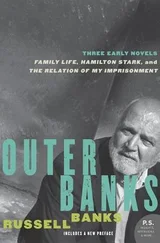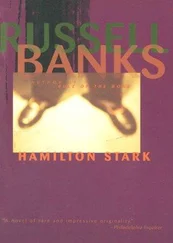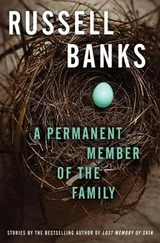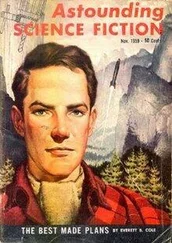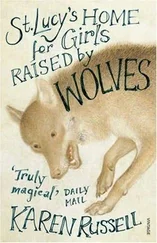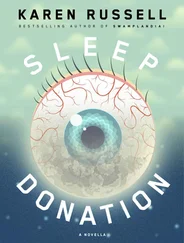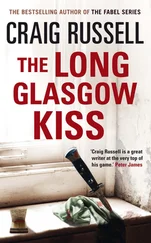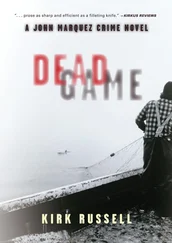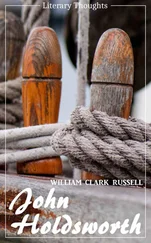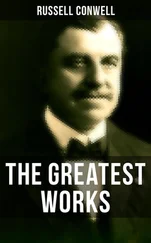“Calm down, dummy, it’s just a bunch of moths.”
Moths jumbled tunelessly above our heads, kaleidoscoping in this way that looked like visible music to me — something that would be immediately audible to an alligator or a raccoon but that we human Bigtrees couldn’t hear. Could my sister hear them? I wondered. She was picking a wedgie on the deck.
“Hear what, Ava?” She freed a tiny, beating moth from my bangs. Moths kept coming at us in unbelievable numbers. “My God,” she whispered, “there must be thousands of them in here!”
“More than that.”
“You heard somebody in the boat, Ava?”
“No, that’s why I was asking. I don’t hear anything.”
The cloud of moths drew their darker blues across the pale egg of the sky. Now I felt stupid. Nothing about these cake-icing blues suggested ghosts or monsters.
“Well, only one way to know for sure. Ready, Ava?”
“You bet I’m ready.” Wings painted our faces. “For what?”
Ossie yanked me into the cabin, sunlight flashing everywhere as we pulled at the door; a second later the moths were outside a dark porthole, and we were inside the machine.
Inside the cabin of the dredge barge we found:
Flaking metal everywhere in these fantastic reds and greens;
The staring socket of a pole sticking straight out of the floor;
A box of lemon candies called Miss Callie’s Pixie Dust, which looked like the flavors of spinsterdom, yellow and soda brown;
A man’s work shirt, size medium, long sleeves and white-and-canary checks;
A mosquito veil;
A dingy WPA jacket;
A cypress workbench, rotted through, its surface slimed with various life-forms;
A rag beneath this that looked as powdery and dry as the last century, something the last century had used to wipe its lips; it smelled wheaty and sicksweet, like beer, and it stuck to the floor;
A skeeter bar bleached the lunar blue of salt;
A four- or five-gallon bucket with the initials “L.T.” scratched in these somehow polite letters onto the side;
Tools I didn’t recognize inlaid on hooks along the walls, fishermen’s swords, I thought: something like a spear with an antlered tip;
A mucky key — I wiped it golden again on my shirt hem and bit its teeth straight;
A map.
We smoothed the scrolled things: illegible mechanical diagrams, the map and the veil. The wavy mosquito netting was made of an amazingly old and weird material that couldn’t be straightened; I tied it over my face like a surgeon and it kept crimping at my nose. I sneezed into its tiny squares. Haunted , a frantic voice in me said, haunted , but my hands disagreed with this hysterical lady: everything I touched here confirmed itself as solidly cloth or wood or rope.
“Be careful with that stuff, Ossie! The Chief might want it, for the museum …”
Ossie was climbing into the galley. I saw cabinets furry with damp greenery, an accordion pump, a sink with a pox of rust around a black faucet. The sink was still full of tiny copper forks and spoons and a squat thermos that for some reason made my heart constrict. I wished we’d thought to bring flashlights. We’d only been inside the dredge cabin for a few minutes but I half-expected to see a moon outside, stars the color of blood, a totally changed world. I peered through a porthole: there was the sun, beaming down at us like a dim-witted aunt. There were the same oblivious trees.
I ducked my head back inside the dredge; Ossie was taking swimmer’s breaths with her eyes closed. She was sitting on the floor between puddles of water and clotted oil, the Ouija board on her lap. She tugged her skirt over her dirty knees and blinked up at me like some waylaid picnicker.
“What are you doing? What — you think there are ghosts here?” I tried to use Kiwi’s roller-coaster intonations on her (I’d seen his sarcasm work like an ax to break her milder possessions). “Tell the ghost it smells like farts in here. Ask the ghost if I can have one of his lemon candies.”
One eye snapped open. “Gross, Ava. Let me concentrate, okay? Please don’t eat the candies from the thirties. Remember how sick you got from the candy corns, and that stuff wasn’t even six months old!”
Ossie smoothed the work shirt that we’d found and put it in her duffel. She was always muling around this duffel now, which must have weighed a ton — it contained The Spiritist’s Telegraph , apple snacks, and her bath-towel turban and various occult supplies.
“Why do you get to have that? What if I wanted the map?”
“You can have the hammer. And maybe the rag.”
“Oh, gee, thanks … ” I stared into the crowd of shadows toward the barge’s stern. The buzzards had all vanished from the railings. The hull was rocking slightly.
“We should go pretty soon, Ossie. We should probably go now. ”
But we stayed, opening the years-glued cabinets.
I kept returning to the map, which we’d weighted with a rock on the wormy workbench. The map had the greenish tint of great age and drew a world I didn’t recognize: MODEL LAND COMPANY/DREDGING OBJECTIVE read the insignia on the bottom, each word boxed together in gray and red lines like a locomotive car. The initials “L.T.” in the left-hand corner again, that same well-mannered handwriting. L.T. had added a date this time: December 12, 1936. Above this inscription, a filigree of golden hairs with tiny numbers (A-7, A-8 …) cut through the grid. Water was blue, that was easy to figure out. Also you could see the black powder kegs of the pinelands, and teak shadings that seemed to correspond to the saw-grass prairies. Other lines were drawn in golden pen, each one numbered and lettered — were these supposed to be rivers? A system of canals?
“Ossie! Do you know how to read this thing?”
I pinned the map against the starboard dredge window with my thumb so that sunlight filtered through its onionskin of colors. We crowded in and touched the parchment in the same nervous way, pinching our elbows back in wonderment, because lookit , Osceola said: the bottom half of the map was totally empty, just pleated space.
“I wonder why these guys never made it to the Gulf?” Ossie traced the green spindle of our panhandle, letting one long fingernail trail all the way down to the colored line between our swamp and nowhere. “Ava, see that? The map just stopped.”
“Ossie! That sounds like a question from a scary movie. Now watch, here comes the part in the movie where a monster bursts out and eats us!”
“You’re right. He’s been hiding here all this time!” She made claws with her hands and rose onto her toes, pretending to menace me. “Blah!”
We giggled for too long; then we turned to stare at a padlocked hatch door in the center of the cabin. It was stained the thin green of bread mold and wouldn’t open. I thought about the silhouette of a man that I had seen or imagined. I could guess what the Chief would say: Girls, that dredge crew just ran out of money. The Gulf route got cut short because this Model Land Company couldn’t finance it. Nothing supernatural about that fate.
When no monsters materialized, we went back to looking at the map.
Ossie pointed to faint shadings that we thought might be Mahogany Hammock, West Lake, the Wet Lungs, but we couldn’t be sure because the map didn’t have a key. The names that did appear — Syrup Kettle, Snake Bight, Poor Ashley’s Island, Dead Pecker Slough — were different from the ones people used now. Some of the hammocks and camps didn’t exist anymore, if they ever had. We marveled that the mapmaker wrote in a lovely cursive, just like our mom. This amazed us, that a muck rat had looped his p ’s and q ’s during the Great Depression (as if cursive were somehow our mom’s invention). This map was like unfinished homework. Whoever drew it up had missed dozens of tree islands that we had personally explored.
Читать дальше

